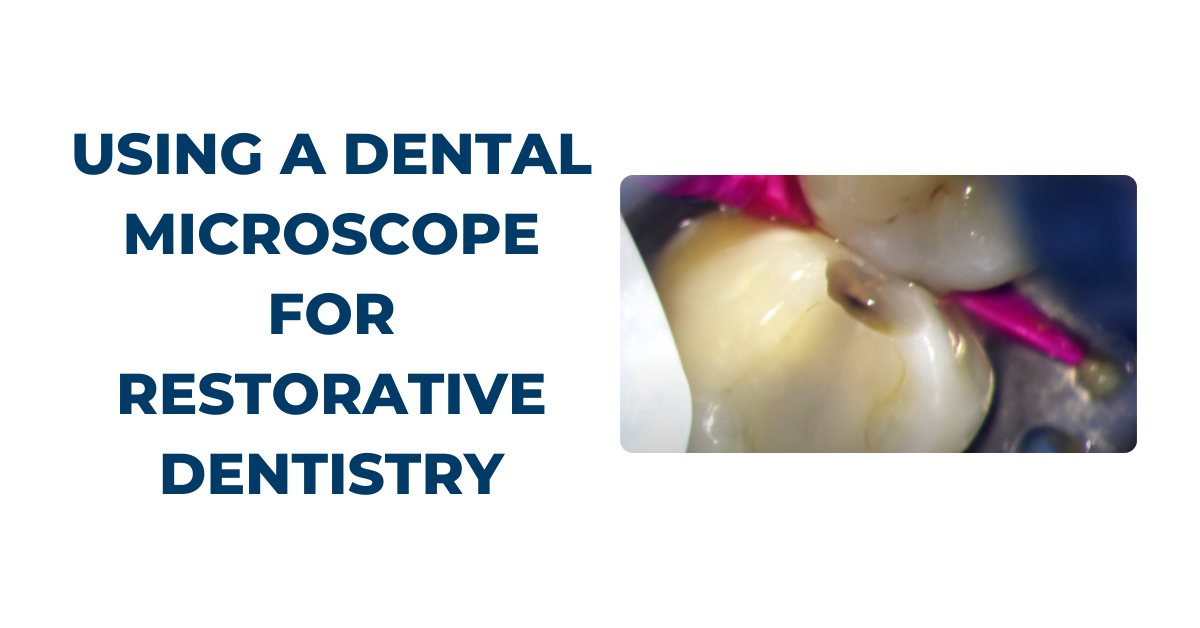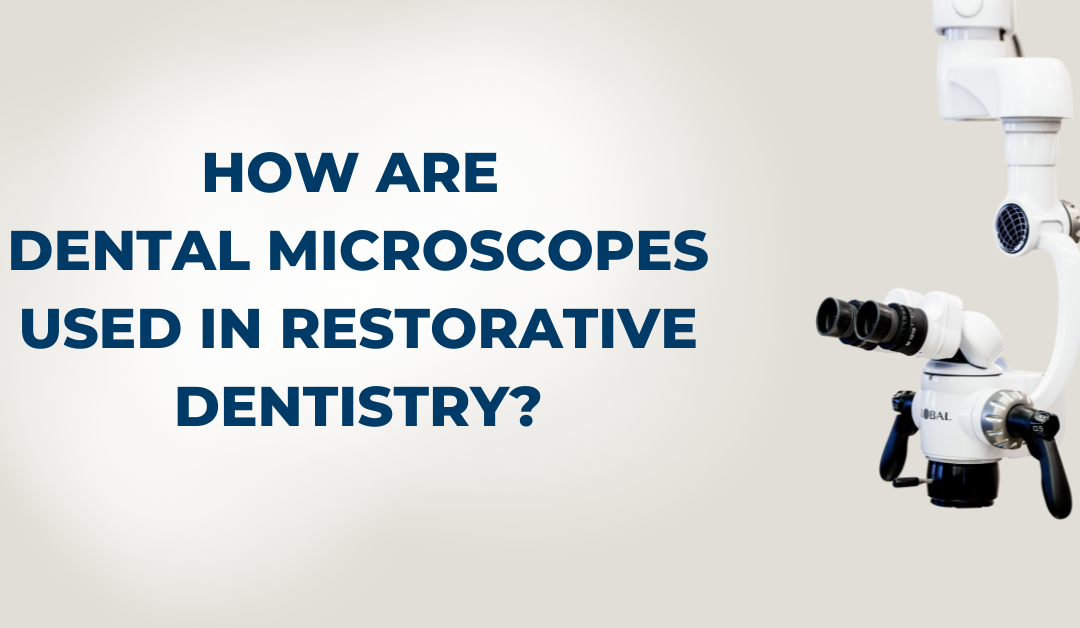Elevating Restorative Dentistry: The Role of Dental Microscopes

Do you practice restorative dentistry procedures? If so, you already know precision and detail are critical to providing the best patient care. Though traditionally associated with endodontics, dental microscopes in restorative procedures is now gaining momentum, transforming the way dentists approach everything from simple fillings to complex reconstructions.
Today, we're talking about dental microscopes in restorative dentistry, including common applications and advantages. Let's dive in!
Why Use Dental Microscopes in Restorative Dentistry?
Enhanced Visualization
The primary advantage of a dental microscope is its ability to magnify the treatment area significantly. This superior visualization is crucial in restorative procedures, allowing dentists to see fine details that are not visible to the naked eye. Enhanced magnification leads to more precise cavity preparations, accurate moldings, and fittings for crowns or inlays, and ensures a more meticulous approach to each procedure.
Improved Precision and Quality
With better visibility, dentists can achieve a higher level of precision in their work. This precision is particularly beneficial in procedures like composite restorations, where the exact placement and shaping of the material are crucial for both functional and aesthetic reasons. The ability to work with such detail enhances the overall quality and longevity of restorative treatments.
Ergonomic Advantages
Dental microscopes not only improve the quality of dental care but also the comfort of the dentist. They allow practitioners to maintain a more ergonomic posture while working, reducing the risk of neck and back strain commonly associated with the profession. This ergonomic benefit can lead to a longer, healthier career for dentists.
Application in Various Restorative Procedures
1. Composite Resin Restorations
When placing composite resins, particularly in areas like the posterior teeth, precision is critical. Dental microscopes aid in the meticulous layering and sculpting of the composite material, ensuring a flawless match with the natural tooth structure.
2. Ceramic Restorations
For procedures involving ceramics, such as veneers, inlays, onlays, or crowns, dental microscopes enable dentists to prepare teeth with greater accuracy and to verify the fit and margins of the restorations with unprecedented clarity.
3. Color Matching and Aesthetics
In aesthetic dentistry, the matching of restorative materials to the natural color of teeth is essential. Microscopes assist in this process by providing a clear, magnified view, ensuring that the colors and textures blend seamlessly.
Incorporating Technology for Better Outcomes
To make the most of dental microscopes, many dentists pair them with other technological advancements. This includes high-resolution cameras for detailed imaging and patient education, as well as digital scanning and 3D printing for precise restorative work.
Patient Education and Comfort
Using a dental microscope also enhances the patient experience. Dentists can share images or live feeds from the microscope with patients, providing a clearer understanding of the treatment and fostering a greater sense of trust.
Looking to Get Started? Reach Out!
If you’re just getting started with a dental microscope, or considering adding a scope to your practice, we are here to help! We can help configure and customize your scope to your clinical needs, helping you get started as quickly as possible.
At Global Surgical, we’re committed to your success, with durable products and our knowledgeable Technical & Customer Service teams. And, we guarantee your peace of mind with our limited lifetime warranty (US & Canada only).
Get started by reaching out to us at 800-861-3585 or by clicking the button below.



.png)